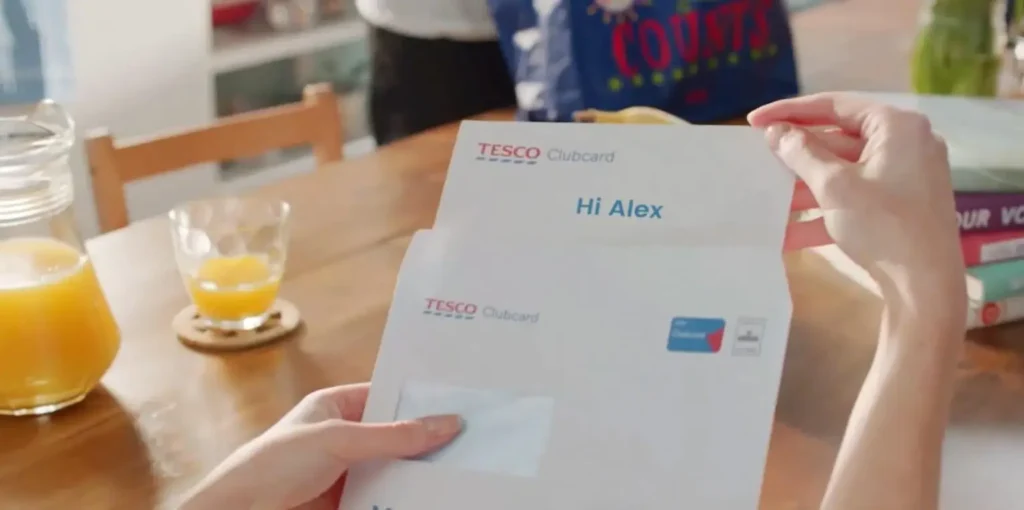If you’ve opened any website or social media app in the past few years, you’ve witnessed firsthand that corporate video is bigger than ever. From humorous mascots on TikTok (we see you, Duolingo) to educational YouTube docuseries to flashy product announcements, companies big and small are leaning on video to engage with their audiences.
Let’s look at what corporate video production is, why it’s so important for brands, and how to get started producing video content for your company.
What Is Corporate Video Production?
Corporate video production refers to the process of creating videos for a company, whether for internal or external use. There are different ways to produce corporate videos, from hiring a video agency to using an in-house animator to leveraging AI to create video content even if you don’t have animation skills or a big budget.
We’ll get into a few of these options below, but first, in case you’re not convinced producing videos is for your business, there are a few things you might want to consider.
Benefits of Professional Video
From training new employees to upselling customers on new products or services, there’s no shortage of benefits and use cases for professional video content.
For one, it’s engaging. We’re bombarded with so many messages every day that it’s becoming harder and harder for brands to create content that customers will engage with, but video is one solution to this problem.
- People spend about 1.4x more time on pages with video than without.
- 82% of consumers who receive video content from brands say that they like that content. This is especially true for younger consumers and higher-income consumers — two markets that many businesses want to target.
Post on
Engaging videos are also the most shareable form of digital content out there. It can be distributed across a variety of channels, from your website to email, but social media is where it really shines. People love posting — and reposting — quality content that interests and delights them, and that’s what video does. (There’s a reason why there are so many funny cat videos online!)
But it’s not all vanity metrics here. Video drives conversions too. Why do 91% of businesses use video as a marketing tool? That’s easy — because it works.
- 87% of marketers say video marketing has generated more leads for their business.
- 90% of marketers report that video marketing has boosted their return on investment (ROI).
- And marketers who incorporate video into their campaigns experience 34% higher conversion rates.
How To Produce Corporate Video
There are several ways that companies can produce videos for their marketing, sales or internal communication needs. Here are a few of the most common ones.
Hire a Video Marketing Agency
One way to produce videos for your corporation is to hire a full-service video marketing agency. Generally, these video companies will work with you from start to finish on your video and oversee everything from storyboarding to screenwriting to pre-production and post-production editing after a video shoot.
- Pros: When you hire a video marketing agency, you will get a fully-customized, high-production final product.
- Cons: Video marketing agencies tend to be expensive and can still require some time from your team.
Hire an In-House Videographer or Animator
Another option is to hire an in-house videographer or animator — or both depending on if you want to include a live-action video shoot. You might also need a motion graphics designer or a video editor. Any variation of these roles can be used to create high-quality content for your video needs.
Hiring internally is a good choice for companies who know they want to create a lot of video content for their company.
- Pros: With in-house talent, you get a team member (or maybe a whole team!) who understands your brand inside and out. They can create high-production videos for your unique needs and improve on each one based on feedback, creating a sense of continuity.
- Cons: The drawback is that salary and benefits aren’t cheap. You’ll also be limited by the employee’s specific skillset. And this option doesn’t allow you to scale up or down. If you don’t have any video projects happening now, you still need to pay your employee.
Hire a Freelancer
If you don’t have the bandwidth to hire internally, hiring a freelance animator or videographer is another option. There are countless skilled professionals that specialize in video production services.
- Pros: The benefit of hiring a freelancer is that they are less expensive than an in-house hire. There’s typically a fair amount of competition for gigs, so you can be choosy finding the right person.
- Cons: An individual freelancer often doesn’t bring the same level of video production quality as a team, and they might not take the time to get familiar with your brand since this is a one-off project and the extra time investment is a cost to them.
Leverage Templates
While you might not be able to get away with a basic iMovie theme for a professional video, there are times when starting with a template as a base can be helpful. Depending on the complexity of the tools you’re working with, you might need someone with advanced video editing skills to work on it.
The key thing here is customization — you don’t want to send a generic video to your customers. See the example business video below which leverages a template used for customer communications during COVID, and note how it’s customized for both the brand and the viewer.
To read more about why we created this template to help with overloaded call centers (and why it worked), check out our blog about forbearance communications.
- Pros: A template can save time and money since you don’t have to create the video from scratch.
- Cons: It can be generic and off-brand if you don’t customize it appropriately.
Create Your Video With AI
AI tools have come a long way in the past few years and have become a go-to resource for marketers, sales teams and business owners. The process of using AI to create your corporate videos might vary depending on what platform you use, but generally the tool takes your idea and turns it into a video using advanced AI algorithms.
For example, our Enterprise AI Video creator can take documents, web pages, or company knowledge bases and turn them into video using retrieval-augmented generation. In non-techy speak, our platform can create videos that draw on your existing content and resources.
Below is an example of how we used a web page (our State of Video Technology market study) to create an AI-generated video. Our AI handled the scriptwriting, voiceover, choosing the visuals —everything.
The benefit of creating your video with AI is that it’s easy to use, quick, customizable, and more affordable than hiring an agency or videographer. The drawback is that it will take some time for your team to familiarize themselves with how the platform works. Once you’re up and running, though, you can dramatically speed up your video creation process.
5 of the Most Common Types of Corporate Videos
Now that you know what corporate video production is and the different ways you can produce a video, let’s look at some of the most common types of videos that companies use.
When it comes to creating engaging videos, the sky’s the limit, but these are the most common ones for businesses’ video needs.
1. Brand Videos
Brand videos are videos created by companies to showcase their brand identity, products, services, values, and personality. These videos are a crucial part of a company’s marketing strategy and are designed to increase brand awareness.
We made this personalized brand video for Cadbury to show how their product fits into the lives of their customers. We personalized it with the couple’s name and photos of them to show how Cadbury is more than just a chocolate company — they’re a sweet way customers can show love.
2. Marketing Videos
Marketing videos encompass a wide range of video content created specifically for marketing purposes. Their primary goal is to promote a product, service, brand, or message to a target audience.
These promotional videos could include:
- Commercials
- Event videos
- Social media videos
- Animated explainers
- Testimonial videos
Below is an example of a video testimonial showing a happy, passionate customer talking about their experience with the company.
Testimonial videos are a great way to build trust with your brand and give potential customers more information about what it’s like to work with you. You can share video testimonials on your website, email campaigns, blog, social media profiles, ads, and more.
3. Product Videos
Product videos are a type of marketing video specifically created to showcase a product or service in detail. They are designed to highlight the features, benefits, and unique selling points of the product and can include:
- Product demonstrations
- Explainer videos
- Features highlights
- Comparison videos
- Unboxing videos
- Instructional videos
- Product launch videos
Check out this product video from Slack. The company took a tool that is not known for being especially exciting and turned it into a fun musical using video marketing. Not only does it highlight all the things their product can do, but it’s also creative and unique. Now, when users dread The Big Meeting, they can’t help but think of Slack!
4. Training Videos
In addition to using corporate videos for external messaging, companies can also use corporate video production for internal training. Company training videos and onboarding videos help educate and train employees on various topics, skills, processes, or procedures and are a convenient and effective way to deliver consistent (and personalized) training material.
We worked with Lancôme to create the personalized training video below. In this interactive training video, employees can role-play different customer scenarios to really get to know the product and how to speak to customers about the brand. It also includes tips to help associates improve their messaging.
Interactive Videos are great for customer communications too. Anytime you want to engage viewers, interactivity is a smart option to draw them in.
5. Internal Communication Videos
Internal communication videos can help share company information, foster engagement and promote a sense of company culture. These videos are used to deliver important messages, updates, announcements and company news to employees in an engaging and easily digestible format. They cover topics like:
- New hire onboarding
- Company updates and announcements
- Employee recognition and appreciation
- Culture and values
- Internal events and activities
- Employee FAQs
- Employee stories and testimonials
The example below shows how a company can use onboarding videos to customize their HR messaging. The video walks the individual through their company benefits and includes their unique PTO balance, wellness balance, and retirement savings. It also includes tips for how this employee can make the most out of their company benefits.
The Challenges With Traditional Corporate Video Production
We talked about the benefits of producing corporate videos above, but it’s fair to say there are challenges too.
For starters, it can be time-consuming. Lack of time is the No. 1 barrier to video marketing adoption. From pre-production and storyboarding to filming, editing and post-production, each stage of the corporate video production process requires careful planning, coordination and attention to detail.
And this process often involves collaboration with multiple stakeholders, including executives, marketers, creatives, and production teams, which can lead to extended timelines.
The time is part of what drives the expense. Traditional corporate video production services — working with a video production agency for every one-off campaign — can get pricey fast. The average cost to produce corporate video content ranges from $1,000 to $10,000 per finished minute.
Another issue — most video content is generic.
Video is great, but with everyone wanting personalization, sending the same video to each of your customers hardly makes for a tailored experience. While corporate videos are certainly engaging, if they always come across like generic ads rather than personalized messages, you risk getting ignored completely. And it certainly doesn’t help your customer experience.
How To Overcome Video Content Challenges
There’s good news. You can overcome each one of these hurdles. Some aren’t even as big as you think.
Let’s start with the last one first. Video is generic and impersonal. This is actually one of the most common video myths.
Most people assume video has to be generic because it’s what we’ve most often seen (only 27% of consumers have ever gotten a Personalized Video). It doesn’t have to be this way, though. The right personalization platform can add personalized data to video creative so you can create customized videos for everyone in your CRM.
What about the time and expense? You can leverage AI to scale up your video content creation using a process known as RAG (retrieval-augmented generation) that will let you draw from content you specify, like your existing marketing collateral.
You can also repurpose existing footage you may already have. We love this video from Ladbrokes that does exactly that. They had the footage from a previous campaign and personalized it for each player with their top stats.
This is a great strategy for a year-in-review campaign, but you can also repurpose testimonials, product demos, behind-the-scenes clips and more.
Video marketing is a great tool, but it’s even better when it’s personalized. According to the latest market research, Personalized Video outperforms generic video by 3x or more:
- 4x more likely to make a customer feel valued by a brand
- 3x more likely to make a customer trust a brand
- 3.5x more likely to make someone become or remain a customer
- 3x more likely to make a customer recommend a brand
And scale is no issue when it comes to personalization if you use the right platform. Our Next Generation Video Platform makes personalizing videos fast, secure and simple, even when you’re doing that for millions of customers around the globe.
Check out the Personalized Video from the University of South Dakota. Even just adding the student’s name shows a personal touch that immediately grabs attention, but videos can be personalized with dozens of niche data points. It all depends on the story you want to tell.
Work With the Right Team
Corporate video production works best when you partner with a team that understands your business’ unique video needs. Whether you’re using personalization to customize a template or working with a full-scale corporate video production company, make sure you work with a team who makes the process straightforward and is aligned with your goals. This guarantees you end up with the best final product possible.
At Idomoo, our fully open platform is easily self-serve, but we can also take care of your campaign from start to finish. When working with us, you get the best of both worlds — engaging video that’s dynamic (personalized or interactive) as well as a creative team that understands your needs and can help you take your video to the next level.
Corporate Video Production at Scale
It’s no surprise that video plays an important role across organizations, from onboarding customers to marketing new products.
Although traditional corporate video production can be hard to scale, video shouldn’t be a communication tool you turn to once in a blue moon for a major brand refresh with a massive budget. It should be integrated into your customer comms strategy. After all, more engaging video content is what 83% of your customers want.
To learn more about how Idomoo can help you ramp up your corporate video production by combining an Emmy Award-winning video production studio with an advanced tech platform, click the button below to schedule a call, and we’ll set up a demo.







